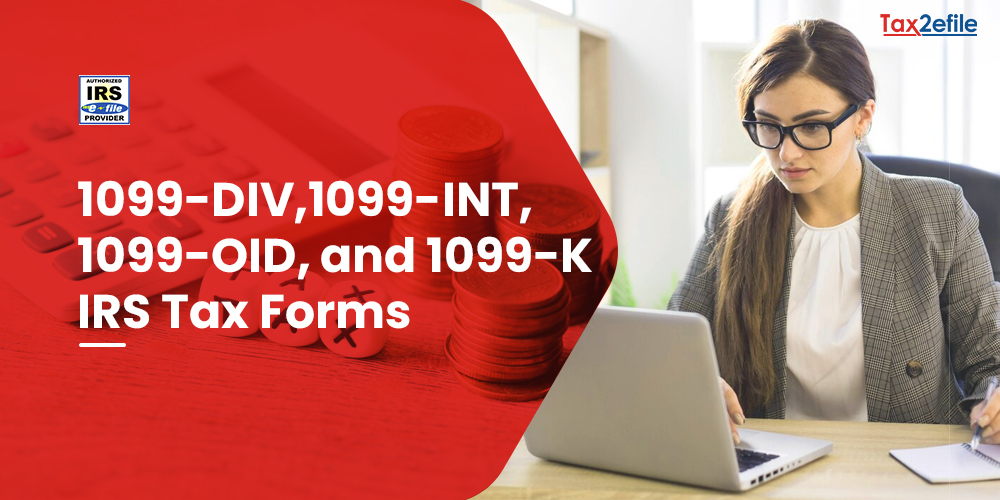- February 23, 2024

Taxpayers use IRS tax Form 1099-INT to report their interest income. This tax Form is issued by all the entities that pay interest income to the investors at the end of the year. This tax form will also include a detailed breakdown of all the types of income and other related expenses. Taxpayers should issue IRS form 1099-INT for any party to whom they have paid at least $10 as interest during the tax year. The deadline to send this tax Form is January 31st of the tax year. One copy of the tax Form goes to the IRS, while another copy is sent back to the taxpayer.
Who Should File IRS 1099- INT?
IRS tax Form 1099-INT is issued to report the interest on deposit accounts, the amount paid to the holder of the debt obligation, dividends, etc. Amounts that are paid to the taxpayers should be reported on Form 1099-INT, and this includes interest on the bank deposits, accumulated dividends that a life insurance company pays, amounts from foreign tax withheld, etc. It is also used to report the interest accrued by a real estate mortgage investment conduit.
Taxpayers who get Form 1099-INT should report certain income on their federal tax return. Taxable interest is taxed at the same rate as ordinary income. This excludes tax-exempt income and income that is exempt at different levels of various tax reporting. Most of the interest income will be reported on Part 1 of Schedule B: Interest and Ordinary dividends. Interests will be any component of the adjusted gross income of the taxpayer when it gets added to the tips, wages, salaries, and other forms of income.
How does Form 1099-INT work?
Taxpayers use 1099-INT to report their interest income to the IRS. Banks and other financial institutions generally issue this tax form. They are offered to customers who have earned interest on their deposits. We can also use this tax Form to report certain types of bond interest. Banks and other financial institutions report the total amount of the interest that the account holder has earned, and this information is entered in the Box 1 of the Form 1099-INT.
This form is to be filed for each taxpayer who has received at least $10 in interest payment or $600 in interest in the course of the business. Account holders will use the information reported on Form 1099-INT to complete their tax returns. If this Form is not reported on time, the IRS levies a penalty of 20% of the underpayment of the taxes for negligence. If the business fails to issue Form 1099-INT, it will be subject to a penalty of $60 to $310 per form based on how long the form is due. For intentional disregard, this penalty will go up to $630.
Who Receives IRS Form 1099-INT?
Taxpayers will receive Form 1099-INT from any of the financial institutions from which they have earned interest income of $10 or more during the year. This includes credit unions, banks, and brokerages. This Form may also come from private borrowers and the US government if any citizen has lent them money and has earned taxes from it. If the citizen doesn’t earn $10 as interest income from a single source during the tax year, the payer need not send Form 1099-INT but report the interest payments to the IRS.
If US citizens paid interest income, treasury obligations, US saving bonds, and interest expenses to individuals, then they should report the taxes withheld on interest. The IRS Form 1099-INT, apart from being used to report interest income, is also used to report federal income tax under backup withholding rules.


